LifeFuels Smart Water Bottle: Optimized with RFID
LifeFuels, created by Jonathon Perrelli and Rob Lawson-Shanks, is an all-in-one hydration system that tracks nutrients and water consumption through a revolutionary “smart” water bottle.
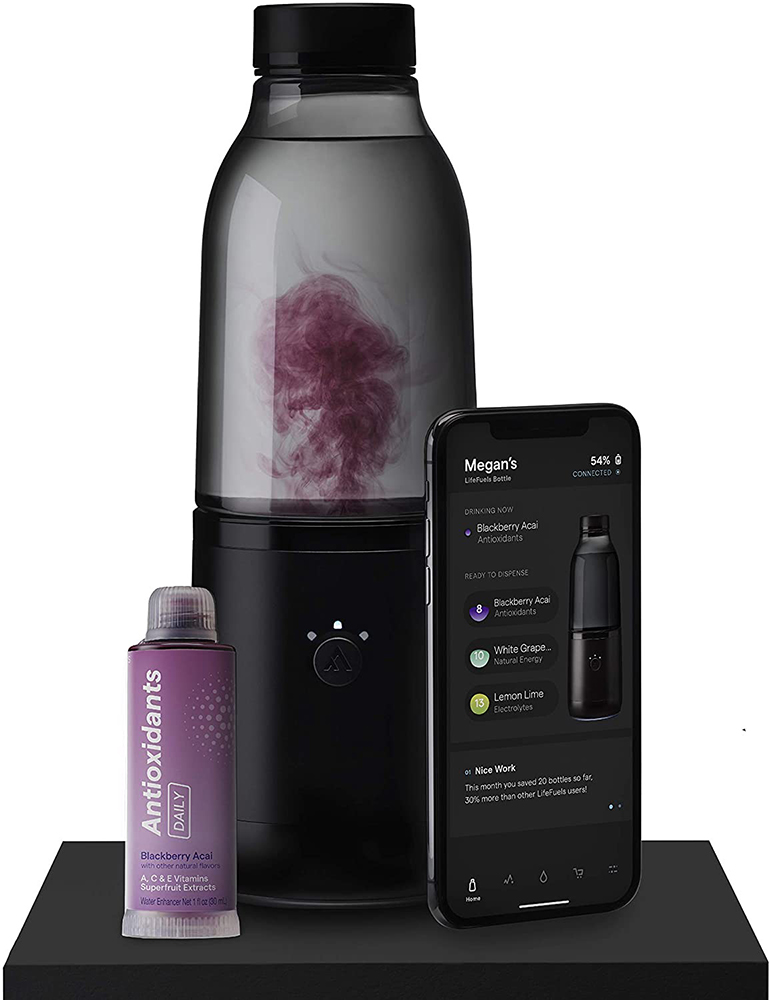
The innovative hydration system consists of the LifeFuels Smart Water Bottle, Pods, and the LifeFuels app available for smart devices. Together, these three elements allow users to personalize their beverages, consume vital nutrients, stay hydrated, and keep a record of their daily nutrition and hydration levels. This level of innovation to improve daily hydration and nutrition, for some, might seem overboard, but this concept was created in response to a very real need. For some individuals, receiving proper hydration and certain vitamins daily is vital; for others, the ability to track these stats can help them achieve goals. In 2006, when Jonathon’s wife was pregnant with their third child, she struggled with getting the adequate nutrition and hydration for their baby, which sparked Jonathon’s desire to create LifeFuels.
Although the idea behind LifeFuels originated in 2006, the actual team, concept, and design that brought it to life were not formed until 2014. After 5 years of prototyping and development, the final product and system were released in September of 2019 in the United States.
The lengthy product design was a direct result of the company’s relentless effort to create the best product possible. In addition to the main goal of tracking hydration, the LifeFuels' team had several important factors to incorporate into the final design, such as:
- Rugged form factor
- Ability for complete personalization
- Seamless integration with smart devices
- Innovative concept and design
- Cutting-edge technology
- Long lasting battery life
- Ability for continuous improvement
- Environmental sustainability
The LifeFuels system consists of individual liquid concentrate cartridges called ‘Pods’, which can be inserted into the innovative Water Bottle, and are then identified by the smart bottle and the information is then sent on to the connected App. The Smart Bottle has three holes in the bottom called ‘Bays’ for inserting cartridges, and the liquid concentrate inside each cartridge is released into the water above.
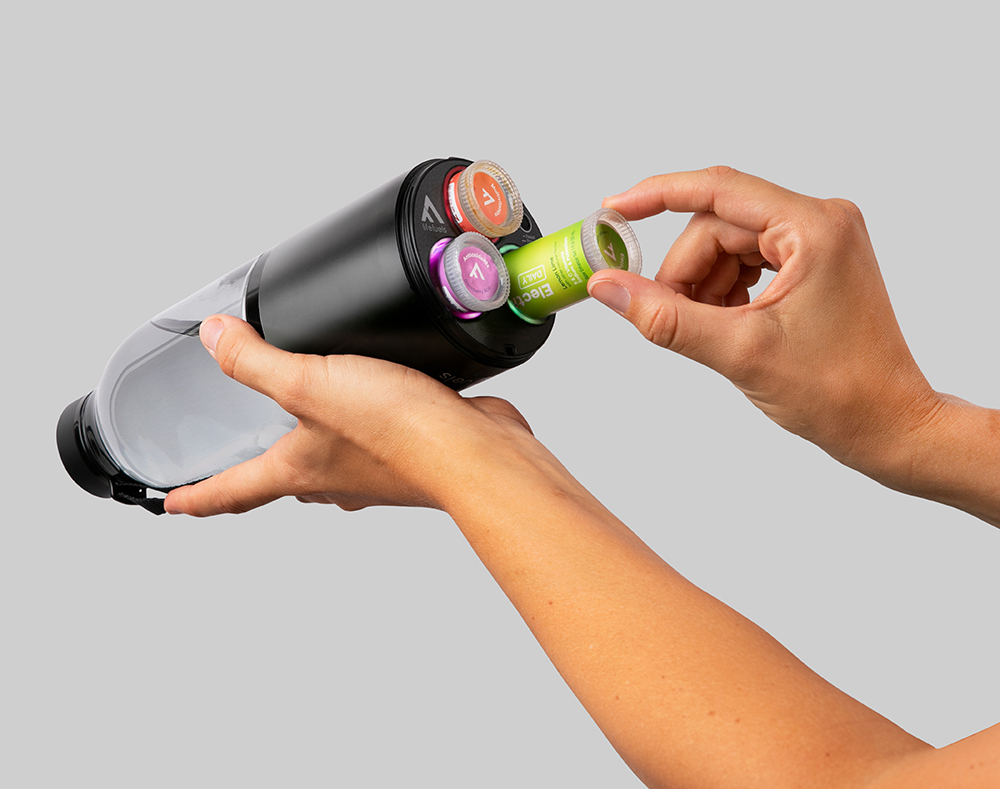
The smart app provides drink recipes, or enables users to create their own unique recipe, and mixes the drink by releasing precise amounts of the different flavored cartridges. Once the drink is finished, the smart app records the amount of water and nutrients ingested and keeps track of it in a log.
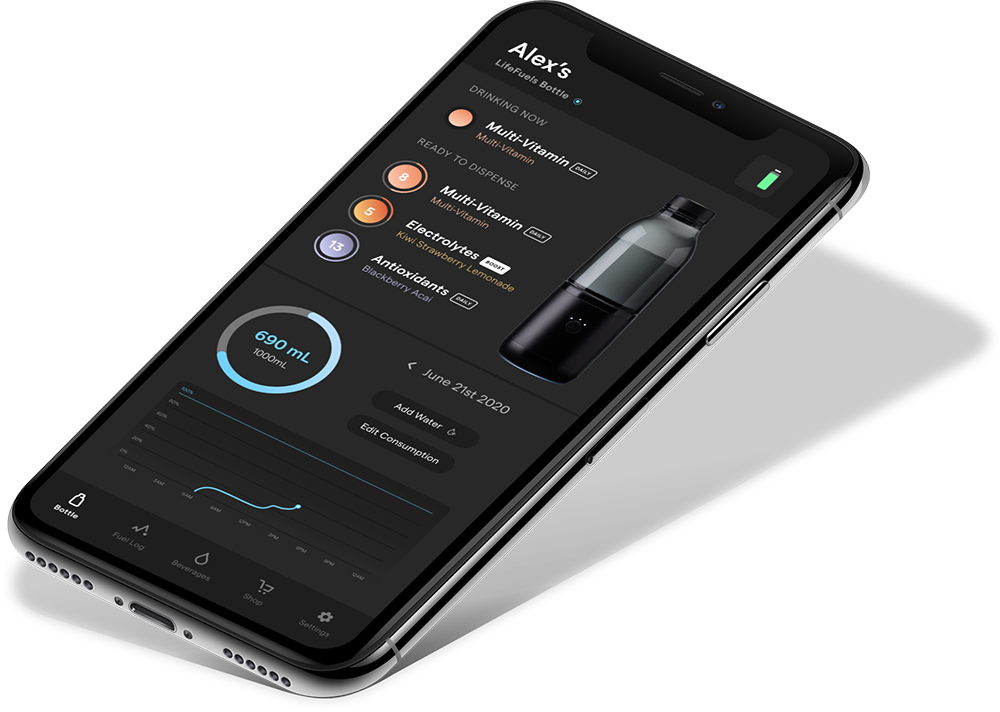
Technology Focused
Because one of the team’s key focuses is cutting-edge technology, the LifeFuels Smart Water Bottle is packed full of tech features in order to provide this one-of-a-kind system. Below are the key features and the technology behind each, that make up the LifeFuels Water Bottle.
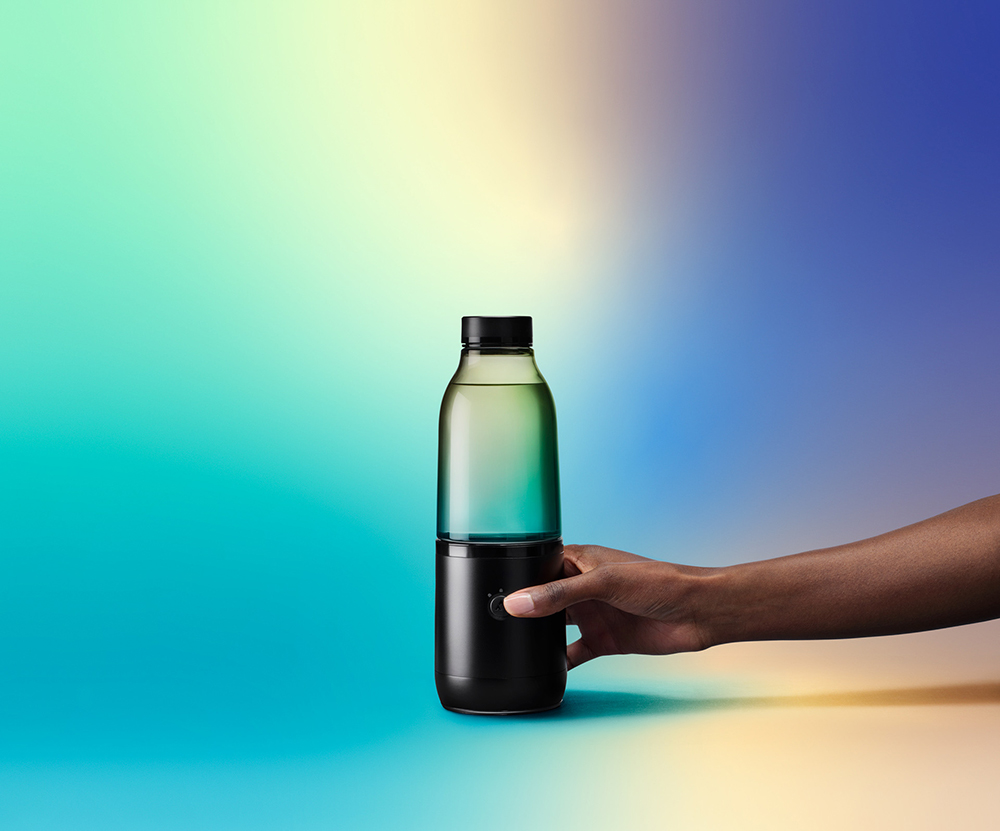
- Water Level Sensing – The ability to determine the bottle’s water level is the key feature that contributes data in order to automate water consumption. The “Pro Pulse Hydration Tracking” uses ultrasonic waves to determine the water level, communicates that information with the bottle itself, which then is sent to the connected app via Bluetooth.
- Cartridge Recognition - Recognizing individual cartridges was key to personalizing flavor and tracking nutrients. An RFID reader and three small custom antennas were added to the Water Bottle in order to detect individually tagged cartridges. RFID tags were added to the top of each cartridge with unique identifiers for the reader and antennas to read and identify. Read More in the Section “RFID’s Niche”.
- Pro Pulse Level Sensing - Similar to how a smartphone’s display lights up when the orientation/level is changed, LifeFuels wanted a similar action to prompt a water level reading. Deemed “Pro Pulse Hydration Tracking / Level Sensing”, this system uses an accelerometer to determine movement, then sends a signal to the ultrasonic sensor to determine the water level. If the Ultrasonic Sensor determines the bottle is empty, the accelerometer then validates that reading using a tilt angle feature to determine if the bottle is at an angle. If the bottle is at an angle, the water level reading is determined to be incorrect and is retaken. If the bottle is not at an angle, the empty reading is determined to be accurate and sent to the integrated app.The accelerometer is also designed to push the Ultrasonic Sensor into a sleep state in order to save power if it determines there is no motion.
- Communication with Smart Devices - In order for the LifeFuels Bottle to communicate with smart devices and its app, Bluetooth was integrated and enabled in order to transmit and receive information. The Bluetooth integration made communication possible with smart devices like phones and tablets, but also with wearable technology like FitBit and Apple Watches. Workouts completed and tracked via wearable smart devices can transmit information to the app, which then can recommend increasing hydration directly after workouts.
RFID’s Niche
RFID’s core purpose is to uniquely identify items which made it ideal for LifeFuels to enable cartridge recognition with their Pods. In addition to unique identification, RFID also provided re-writable, non-volatile memory and data protection, which were both key to product success.
When the team took a deep dive into RFID, they were able to determine that UHF and LF RFID were not ideal for their application, due to too much and too little read range, respectively. However, the read range for HF RFID was the perfect median for their specific use-case.
HF Tag Selection
After deciding on HF RFID, the team purchased a few samples of HF RFID tags for testing. Because the Pods are cylinders, the required HF tag needed to be round, and small enough to fit on the limited space on bottom of each cartridge. After testing a few different options, the Smartrac Circus Clear Wet Inlay was selected and purchased.
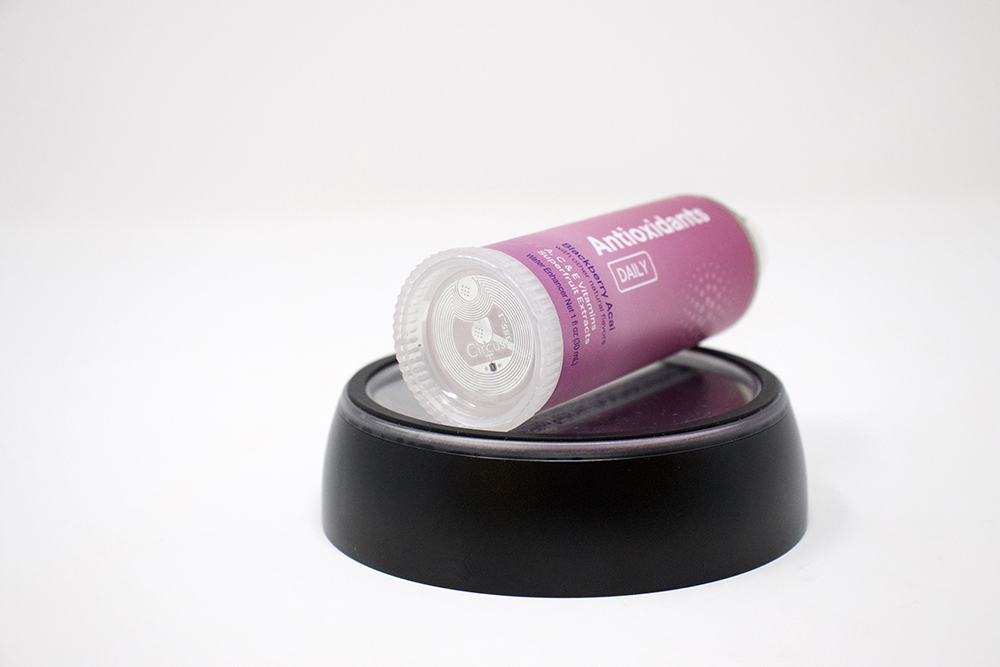
HF Hardware Selection & Design
Because the LifeFuels bottle holds three product cartridges, the HF RFID hardware needed to be able to read and identify each of them. One HF reader and one HF antenna could easily read all three cartridges in the compact area, but the Water Bottle wouldn’t be able to determine cartridge placement. Cartridge placement between the three bays is essential for drink customization and nutrient records. Because each cartridge or Pod’s location had to be known relative to the bottle, the holes for loading cartridges, called ‘bays’, needed separate HF antennas.
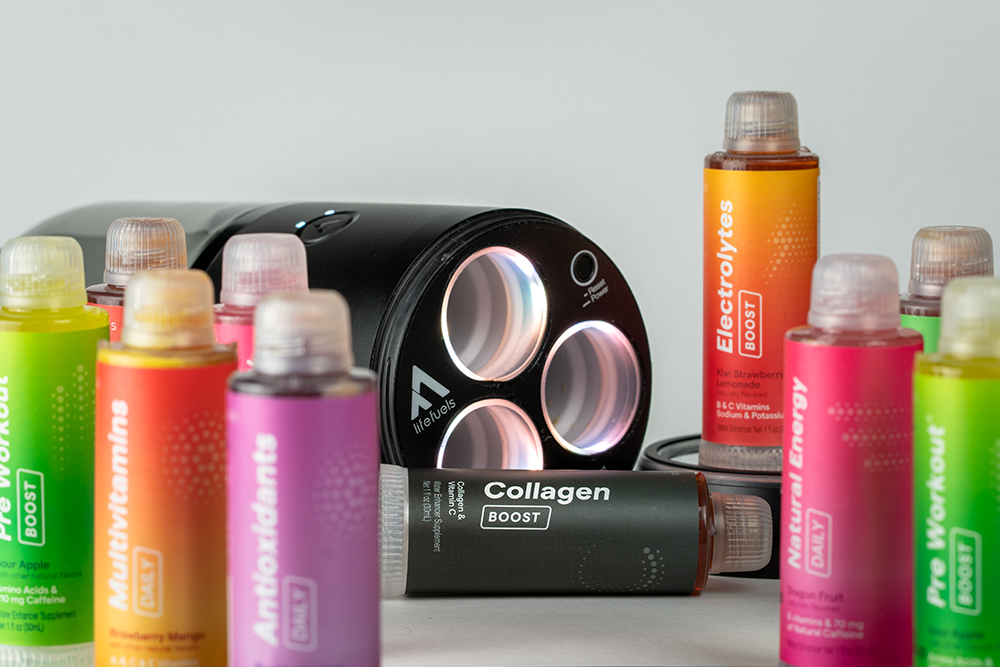
Because of the compact size, necessary form factor, and precise read range requirements, the LifeFuels team decided to create custom HF antennas. A custom developed Printed Circuit Board, or PCB, was created to verify the necessary antenna shape and define the network. Rigorous testing was performed with equipment the team had on hand, like an oscilloscope and multimeter, and ultimately the antennas were designed, multiplexed, and modified to fit the Bottle’s form factor.
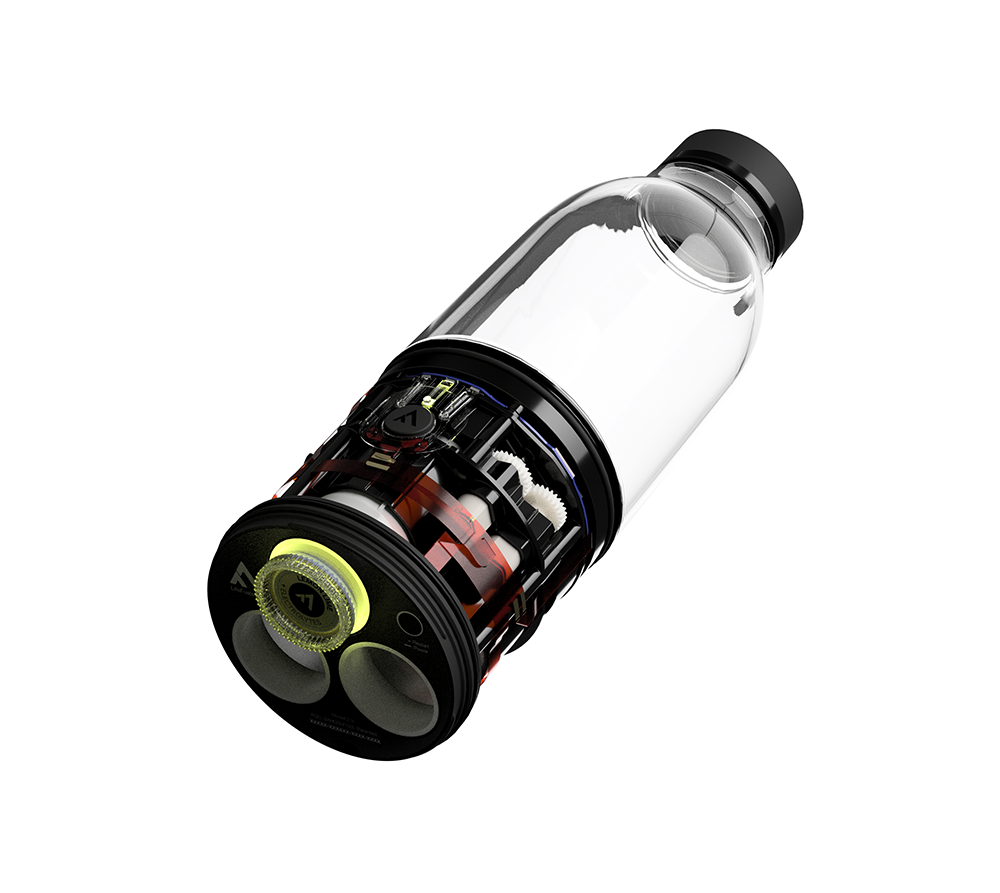
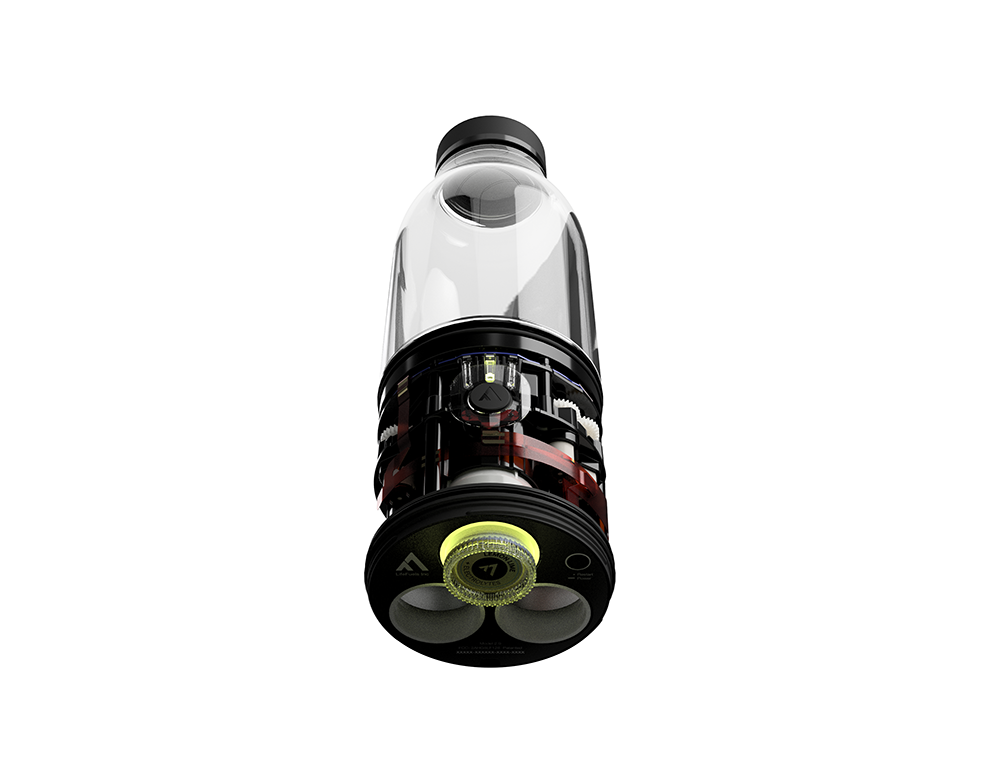
One very important part of the HF antenna creation process was eliminating any and all stray RF reads. Abe Maclean, Lead Electrical and Embedded Engineer, explained the process.
“In our applications, [in order to eliminate the possibility of stray reads] we pay attention to the error codes provided by the transceiver and the RFID tag. The data stored in the tag memory contains check sums fields, to provide additional confidence of data consistency. The antennas are also very positionally sensitive, so it is unlikely that a tag that is not axially aligned to the antenna will be detected.” - Abe MacLean
The other key piece of the puzzle was the limited amount of space, both in the bottle and on the PCB. The limited space led to two issues the team had to work to solve.
1. A non-ideal antenna shape that hindered read performance
2. Restrictions to how to power the antennas
After testing several different connections and setups, they were able to use 1 transceiver, 3 RF switches, and 3 separate impedance matching networks in order to “find a solution that allowed for adequate read range, fit in the available board area, and was cost effective.” – Abe Maclean
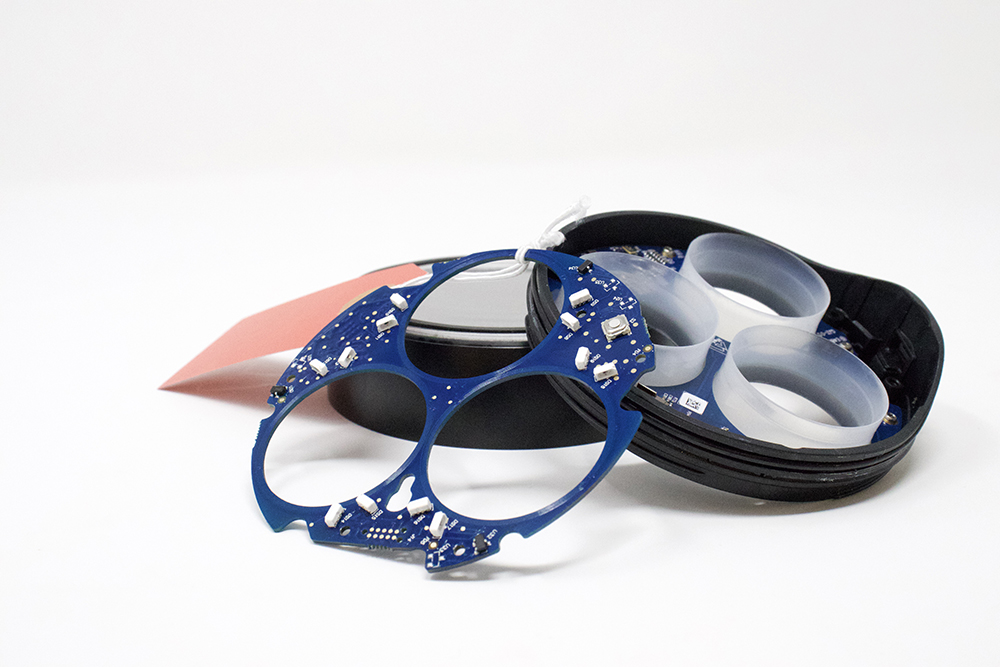
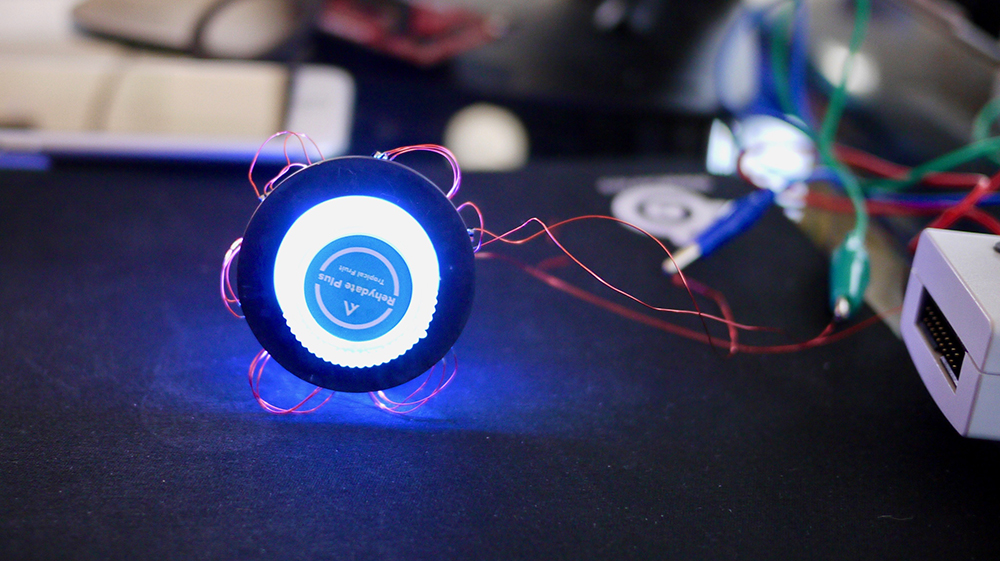
RFID’s Expanded Role
When the design was complete, the LifeFuels team started manufacturing the completed product. During the manufacturing, fulfillment, and logistics process, new opportunities arose to use their existing HF RFID tags on FuelPods to streamline processes. Below are the additional use cases that RFID technology is improving for LifeFuels.
Work-in-Process
The manufacturing process for FuelPods consists of no less than 5 semi-automated stations, and each station works on multiple Pods at once. By placing the HF RFID tag onto a FuelPod at the earliest possible point in the manufacturing process, RFID readers between stations can track individual Pods throughout the manufacturing process. The read data is recorded in a database, along with timestamps, and later used to analyze station performance and efficiency, which helps improve the overall manufacturing process.
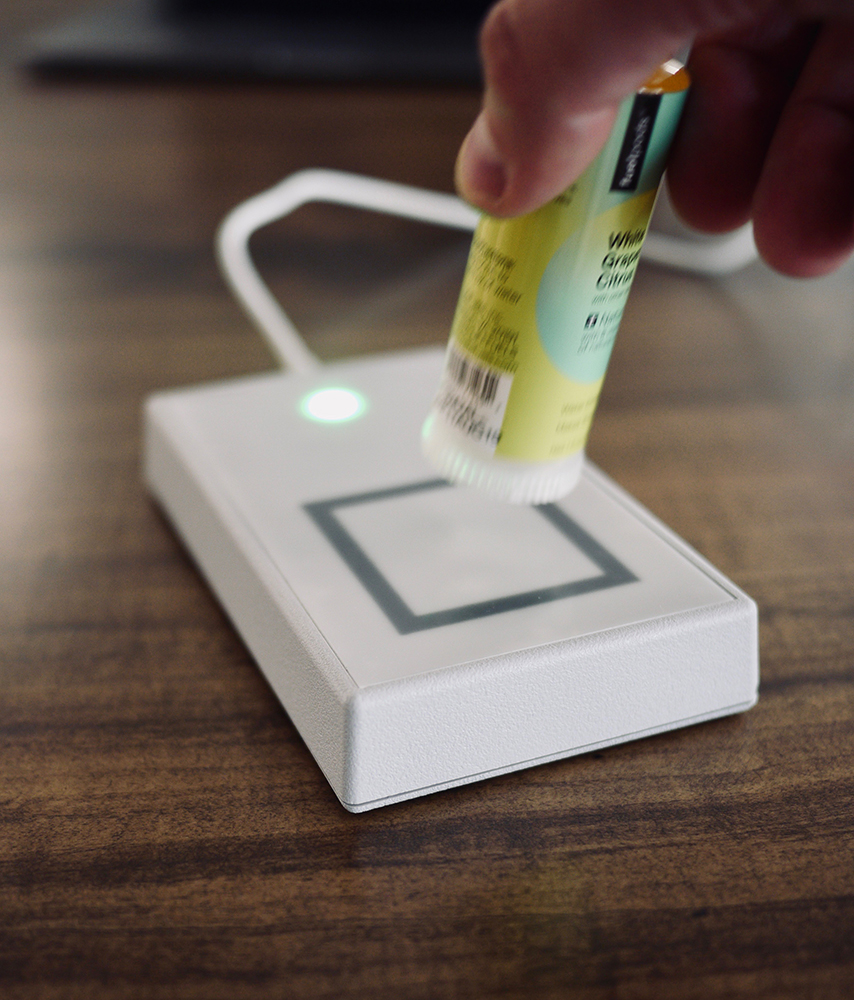
Inventory Management
Because customer orders are filled at the team’s headquarters which is separate from the manufacturing facility, all Pods must be packed in crates to be transported from one to another. The team’s headquarters, referred to as HQ, is where all inventory is kept and where all orders are fulfilled and shipped. Once the Pods are manufactured, they are loaded into crates, 60 Pods per crate. In order to keep track of which Pods enter inventory, when the crates arrive at the HQ building, each crate is scanned by a custom developed HF reader/antenna. Filipe Aguiar, Senior Embedded Engineer, discusses the design:
“Our team developed a reader [consisting of] 4x4 antennas, antenna multiplexer, and one transceiver, able to identify all 60 Pods in the crate and perform [a check of] inconsistencies. The development of the reader consisted of designing and testing different antenna geometries and their matrix arrangement to reach a suitable compromise for antenna size, RFID tags of interest for a particular antenna, and the interference from the other tags and antennas.” - Filipe Aguiar
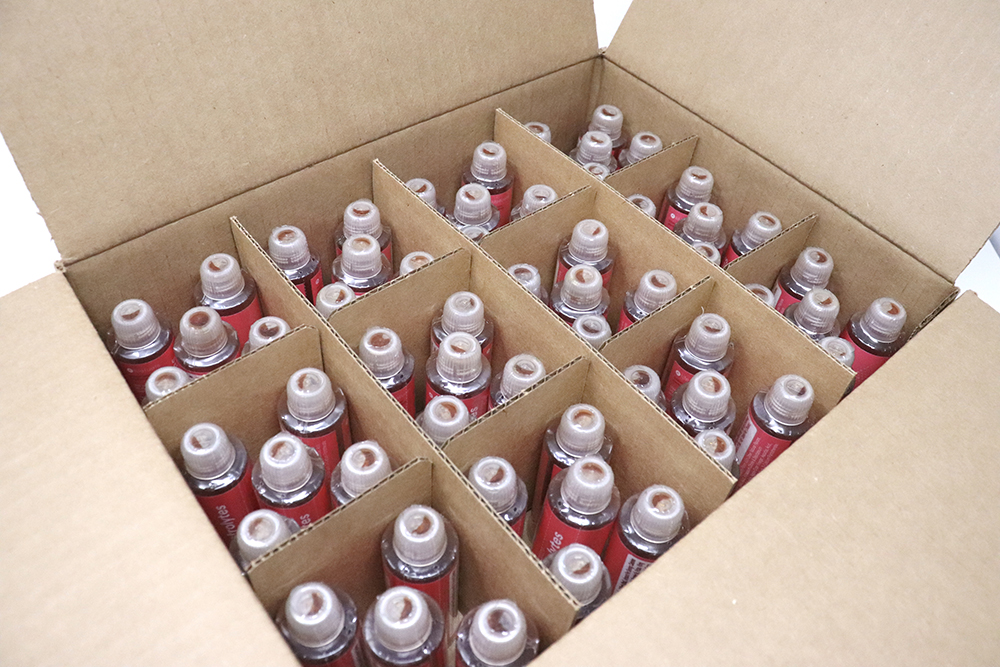
With the custom HF RFID equipment, all Pods are entered into inventory where they await picking for customer orders.
Shipment/Order Verification
When each Pod is tagged, the RFID tag is programmed with information such as product identification, filling date, and SKU, and then the data is locked and protected. After locking, the tag is read for the first time with the newly written information, and the tag read data is sent to a server and kept for LifeFuels’ records. After the manufacturing process is complete, each Pod moves to a packaging station for internal transfer between facilities. Each Pod travels from manufacturing, to internal transfer, to HQ inventory check-in, and finally to inventory storage. Once a group of Pods are picked from inventory to fill a customer order, the order is packaged and scanned with an RFID reader. The RFID tag reads conduct the following checks:
- Verifies that the order data matches the number and type of products in the shipment
- Verifies that each product’s SKU is recorded, associated with a customer’s order, and matches the server’s order information line by line
- Verifies that each Pod’s shelf life is valid
- Verifies that no recall exists on that particular SKU
If all those pieces of data are verified, the order is then pushed out to be collected by the logistics company.
Identification for Recycling Program
Another goal set by the LifeFuels team was to create an environmentally sustainable product. In order to meet that goal, the team created a recycle program, so that empty Pods can be mailed back at no cost to the customer, and sustainably recycled. When Pods are mailed back for recycling, each HF tag is scanned to identify the specific Pod and associated customer order and finish the lifecycle for that individual Pod. By doing this, the team can track how many Pods are recycled and the length of a typical Pod lifecycle, among other data. The Pods are then sent to a partner for sustainable recycling.
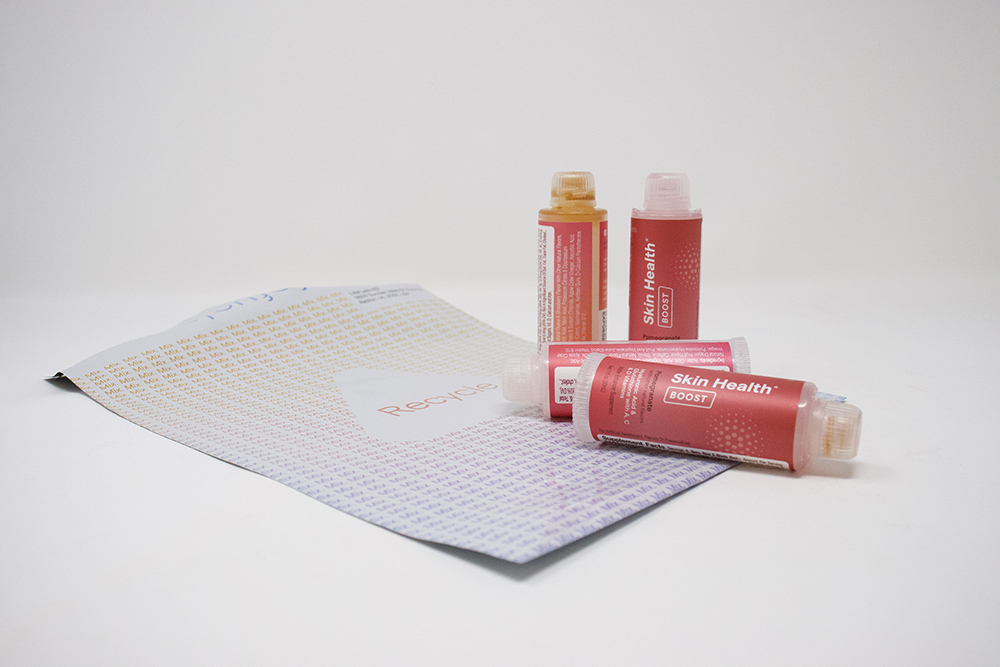
LifeFuel’s Future
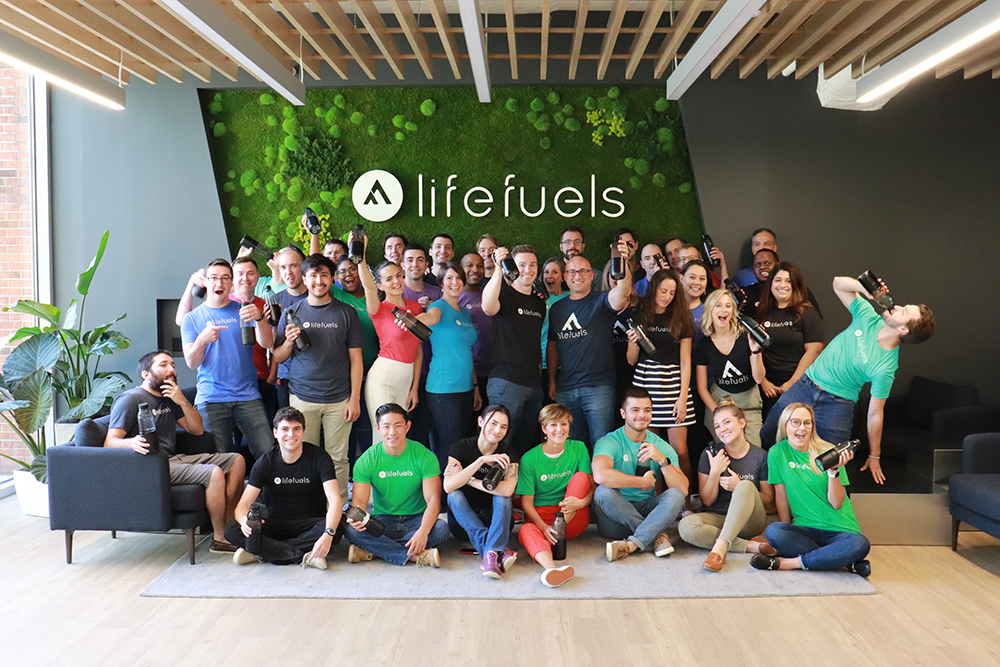
The LifeFuels team is continuously developing advancements in the beverage industry, and their RFID implementation will continue to payoff in the future. The LifeFuels beverage scientists are always working on new Pods and new flavors which are available every few months, to keep the hydration experience new and exciting.
The LifeFuels team had kindly offered to provide RFIDInsider readers with a 10% coupon code for a LifeFuels Starter Pack. The code is “RFID10” which can be entered upon checkout, checkout the link below to see the Welcome Kit!
www.lifefuels.com/shop/bottle/welcome-kit
For more information on LifeFuels, checkout their website, www.LifeFuels.com to learn more about their unique hydration experience. For more information on RFID, checkout our website, blog, and YouTube channel!
